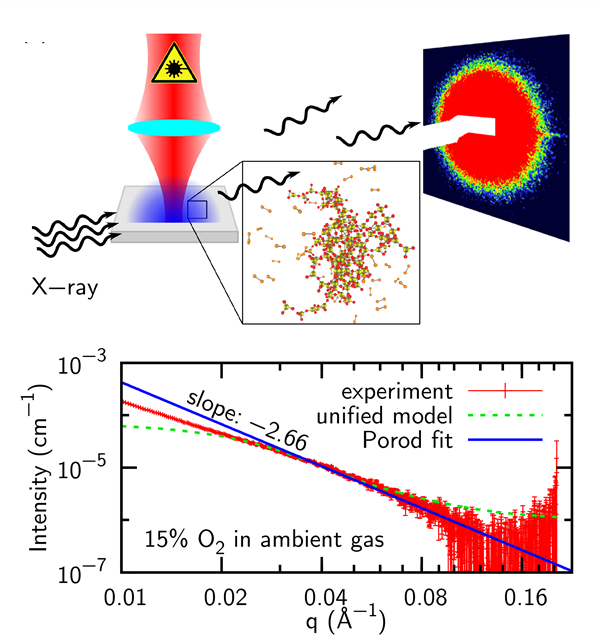
Oxidation of metallic nanoparticles in a laser-induced plasma
Georg Daniel Förster, Franck Rabilloud and Florent Calvo (team Physicochimie Théorique), Jérôme Menneveux and Jin Yu (team PUBLI), in collaboration with colleagues from Institut de Physique de Rennes and Laboratoire Interdisciplinaire Carnot de Bourgogne, have published an article entitled «Oxidation-induced surface roughening of aluminum nanoparticles formed in an ablation plume» in the journal Physical Review Letters.
 Laser-induced plasma was born with the invention of such magic light 50 years ago. Its applications have been well developed then, as a spectroscopic emission source as well as a source of nanoparticles. But what happens in this ephemeral and changing medium, having all the characteristics of an alchemist's cauldron? Providing the answers was very challenging. On the one hand, one has to observe the plasma beyond its initial expansion. Indeed, the only way to "see" an ablation plume in its recondensation phase is the diffraction of an intense and well collimated X-ray that only a synchrotron is able to deliver. On the other hand, the detailed description of the involved processes requires a microscopic interaction model, still unusual in this domain. The results obtained for aluminum nanoparticles, with a measurement campaign at the SOLEIL Synchrotron and simulations based on molecular modeling with a reactive force represent a significant advance in our understanding of the oxidation process of metallic nanoparticles. The demonstrated experimental and theoretical approaches will be applied to other metals such as silver or titanium.
Laser-induced plasma was born with the invention of such magic light 50 years ago. Its applications have been well developed then, as a spectroscopic emission source as well as a source of nanoparticles. But what happens in this ephemeral and changing medium, having all the characteristics of an alchemist's cauldron? Providing the answers was very challenging. On the one hand, one has to observe the plasma beyond its initial expansion. Indeed, the only way to "see" an ablation plume in its recondensation phase is the diffraction of an intense and well collimated X-ray that only a synchrotron is able to deliver. On the other hand, the detailed description of the involved processes requires a microscopic interaction model, still unusual in this domain. The results obtained for aluminum nanoparticles, with a measurement campaign at the SOLEIL Synchrotron and simulations based on molecular modeling with a reactive force represent a significant advance in our understanding of the oxidation process of metallic nanoparticles. The demonstrated experimental and theoretical approaches will be applied to other metals such as silver or titanium.


















